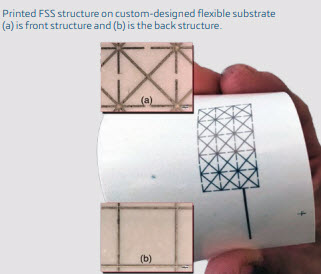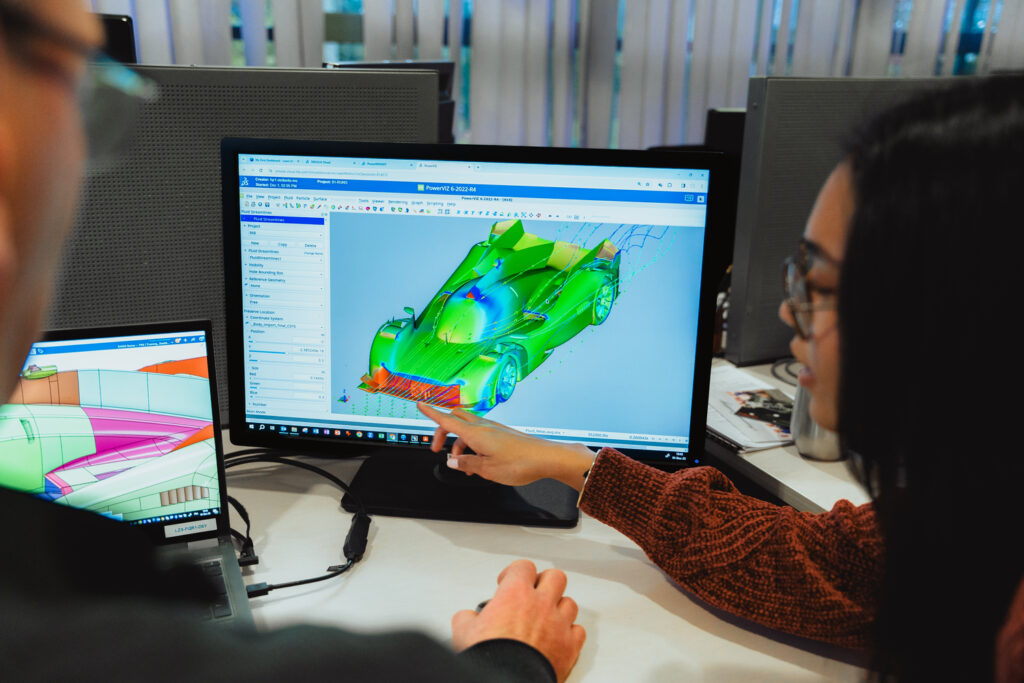Heralded by many as the next great advancement for printed circuitry, flexible hybrid electronics (FHE) are becoming increasingly widespread. By printing electronic circuits that can be bent, twisted and stretched, devices can be made smaller, lighter and more versatile.
The challenges of FHE design are both mechanical and electromagnetic. The materials that go into a flexible device need to be able to withstand bending cycles without breaking—even slight damage to the electrical conductors can degrade device performance—and to tolerate environmental effects such as heating, sunlight and exposure to air, water or other chemicals. As the device includes both a conductive layer and a substrate, the adhesion of the ink to the substrate also needs to be ensured. Meanwhile, the deformation will change the electrical properties of the device. For example, the length of an antenna is directly related to its resonant frequency—if the antenna is stretched, its performance may change.
Researchers at the UMass LowellNanomanufacturing Center, together with Raytheon, are developing next-generation asset-monitoring platforms using FHE technology. Tunable electromagnetic filters or frequency selective surfaces (FSS), utilizing a functionalized substrate based on BST/LDPE composites, can replace current transmit arrays for beamsteering, alleviating complex structures and designs. The FSS can be printed on a flexible substrate and incorporated into an applique that can be attached directly to the asset and adapt to its shape.
To produce a successful product, the team needed to find a substrate material that was strong and flexible enough to survive in the challenging environment, while also meeting the necessary electromagnetic requirements. The team used mechanical simulation with Abaqus to model the bending and stretching of the device, and electromagnetic (EM) simulation with CST STUDIO SUITE to simulate the performance of the deformed FSS. In addition, by simulating the EM properties of the substrate material, the team was able to calculate the biasing voltage required for tuning the FSS and study the effect of manufacturing variation on antenna performance.
The success of the concept led to the UMass Lowell team winning a grant from NextFlex—a public-private consortium founded in 2015 to facilitate technology innovation and commercialization—to accelerate workforce development and develop a sustainable advanced manufacturing ecosystem. The next step for the researchers is to refine the concept and produce a complete asset-monitoring system using the technology.
With the enabling power of simulation for rapid design and virtual prototyping, it is important to characterize materials with simulation in mind. In a second project with the UMass Lowell Nanomanufacturing Center, Raytheon and several partner companies are designing mechanical tests that will fully characterize flexible electronics. These are not only designed to provide the inputs vital for realistic simulations, but the tests themselves are designed using simulation models.
For example, interface properties between the printed ink and flexible substrates are needed to design flexible electronics that push the failure envelope during use. Traditional interface tests are unfeasible, so a suite of new tests is needed. The large deformation and advanced material model capabilities of Abaqus are being utilized to design tests that yield interface strengths and energies in the face of nonlinearities. If successful, the methods developed here could serve as a blueprint for obtaining material inputs for increasingly complex and challenging material systems.

NextFlex 2.5 team (from left to right): Mary Herndon, Engineering Fellow, Mechanical, Materials and Structures (MMS), Technology Area Lead at Raytheon IDS; Claire Lepont, Senior Technical Program Manager at UMass Lowell; Scott Stapleton, Assistant Professor in Mechanical Engineering at UMass Lowell; Alireza Amirkhizi, Assistant Professor in Mechanical Engineering at UMass Lowell.
For More Information: www.uml.edu/research/nano
This article was originally published in the June 2018 issue of SIMULIA Community News magazine.






